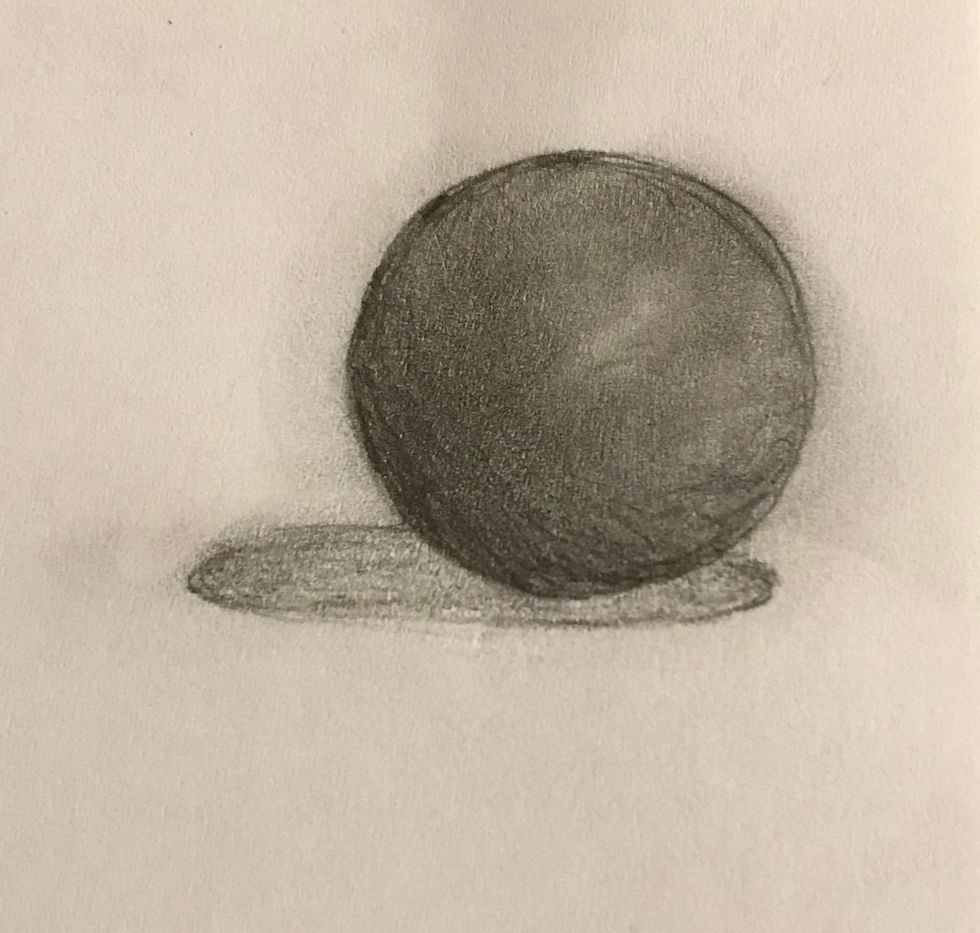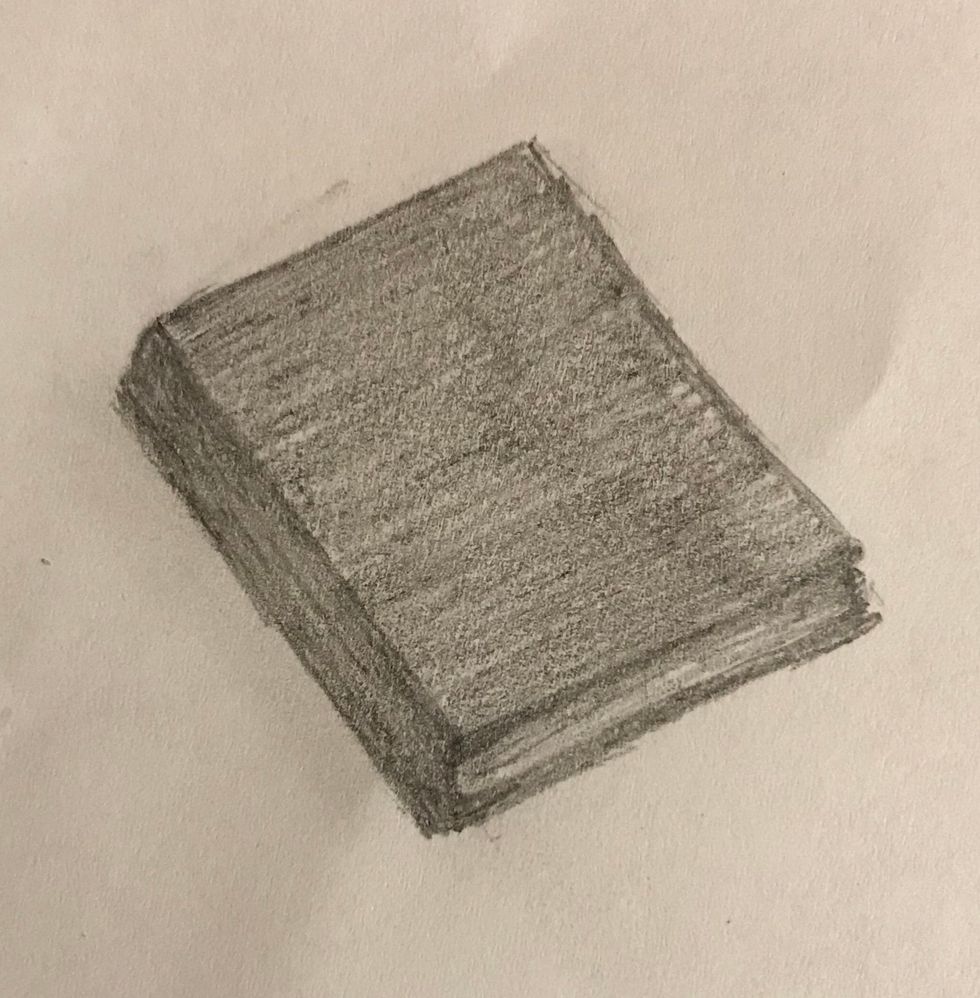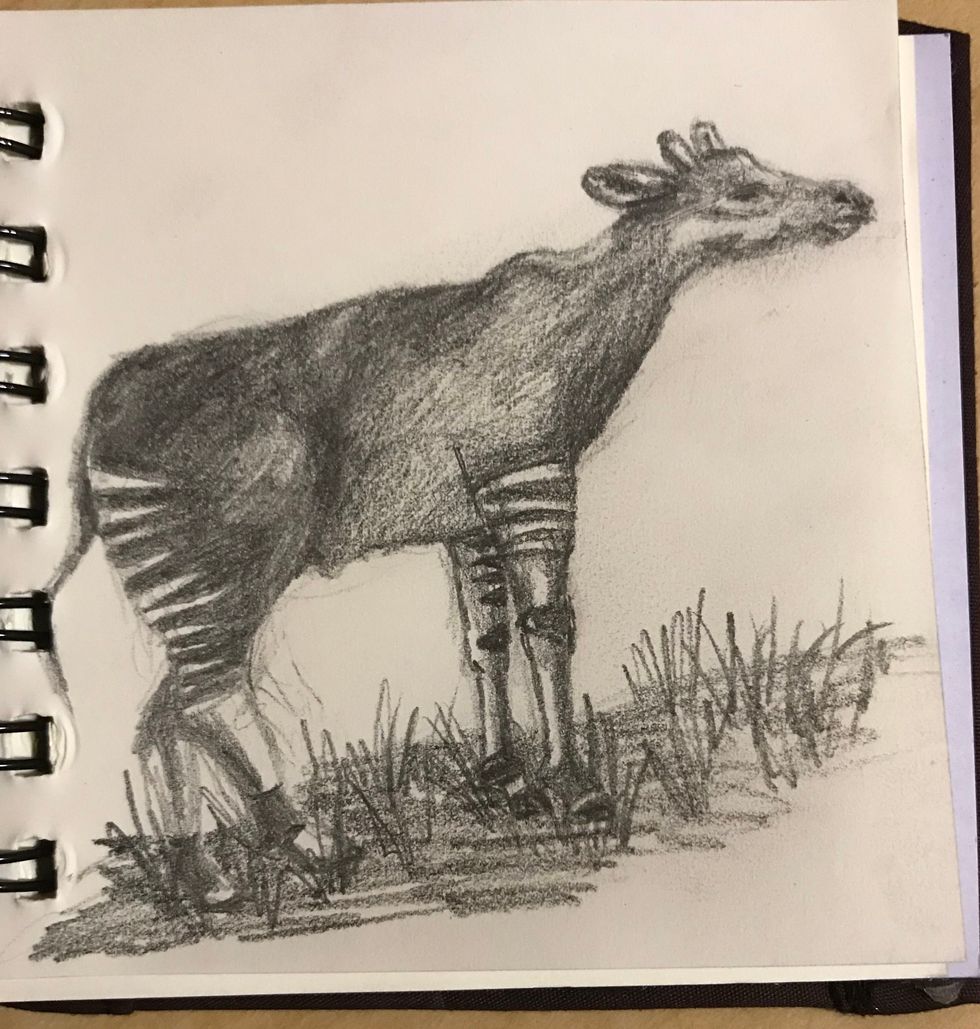So you want to learn to draw realistically? Realistic drawing is very rewarding and enjoyable (and it merits a lot of compliments). There are some basics you should definitely know and master, and all of the following subjects will help you develop those essential skills. My personal favorite subjects to draw are nature and people, but I also had to master these basics first in order to be able to draw that subject. So get your pencils and paper out and start sketching!
*All drawings were done by me with a no.2 pencil.
1. A Dolphin From The Side
At first thought, this may not seem too easy, but it's simple too figure out a formula for the basic shape. Then you just have to work on the proportions of the tail to the snout to the flippers. Shine marks are relatively easy to do because they're almost geometric (unlike fur or wool), so shading is also generally quick and simple. This was one of the first thing I learned to draw when I was little, and it helped me learn organic shapes, proportion, and easy shading. Drawing a dolphin teaches artists a lot of basics, so I always tell people who want to learn realistic drawing to start with this. If you want to be extra like me, you can draw it jumping out of the water in front of a sunset.
2. A Sphere
Again, most people don't just randomly say, "Oh hey I drew a sphere today!" However, it's still extremely simple and monumental in developing certain skills needed for drawing anything realistically. Sketching out the shape will help you in mapping out a perfect circle because the skill of being able to draw a near-perfect circle is fundamental in drawing still-life portraits. Drawing a sphere will help you develop an idea of dimension and make all your drawings 3-D. This will also help with shading, perspective, and lighting
because if you look at a sphere from a different angle, the light will hit it differently.
3. A Book
Although this may seem daunting at first because of all of the pages and angles to conquer, a book is actually surprisingly manageable to draw. This is because it stays even throughout, with straight lines, fixed angles, and geometric shapes
. The trickiest part that will help you grow the most as an artist is the lighting. Different angles are shaded at different levels of lighting and darkness, so being able to tell where your light is coming from and being able to replicate the shadows will immensely expand your ability to draw geometric, straight shadows, such as in still-life portraits and building sketches.
4. An Animal From A Drawing Book
Here's a little challenge: get a drawing book, pick an animal, completely ignore the steps in the book, and just draw the animal
as you see the finished product. "That's dumb," you say, "Divya, why are you making me do this?" To that I say, trust me. The steps usually break down the picture of the animal in geometric steps, starting with circles, rectangles, or other extremely mundane and basic steps.
In the world of realistic sketching, this never works. Children may want to copy the steps and get that automated nice result, but adults know that this is not applicable and transfer-able to drawing literally anything you see. First, lighting almost never hits an object from such a formulaic angle. Also, objects you draw will always be in a dynamic pose, perhaps halfway turned or bent. Think of a person. You won't be able to draw every single person you see if you only have practiced drawing a person with his hands out, face up. Drawing the animal directly from the end result picture in a drawing book will give you a break from photo reference pictures, allow you to see how the artist in the book drew the animal, and be able to pick up little parts of the picture that help you recreate it. When you see something in real life, you will have to do just this: pick a point to start at and just draw what you see, how you see it. Therefore, it's illogical to try to learn realistic drawing with a formula; let it flow from your vision.
5. A Deer From A Strange Angle
I know what you're about to ask: Why are you giving me so many animals to draw? And why a deer of all animals? Good question. Animals can help you develop your realistic drawing skills in a way that no other thing can. This is because they are the most organic and natural shapes possible. They contain shadows and texture that help an artist learn perspective and shading. Plus, a deer has easy texture because of the short length of its fur and has easy muscle ripples that will help you learn shading.
6. A Fruit Bowl
This may be the most basic thing to draw ever, but it's a mainstay of basic realistic sketching classes for a reason. A fruit bowl is a still life, so it is easier (in my opinion) to draw than some natural elements because you don't have to give it life and motion. However, it still assists an artist with essential skills such as perspective, texture, shading, and lighting
. It also will exercise the skill of making some things in the background and some things in the foreground.
7. The First Thing You See After Completing The Above Things
First, draw the objects above and then go ahead and pick something fun! You really can draw whatever you want; you just have to have the patience to apply the skills you've learnt. Some people start with fabric, some begin with people, and some start with water. You can focus on any object you want, as long as you transfer your newfound realistic drawing skills over to it. Make sure the topic is something you would enjoy, and not something you think will just teach you more skills. Every single thing you draw will have some lesson to teach you!
Many people think realistic drawing is ridiculously difficult and requires intense training to master. However, although it does require practice, there are some essentials you need to know that make it so much more manageable. If you practice all of the basics I've listed here, you'll be drawing bricks and wildebeest in no time. Good luck and happy drawing!


















